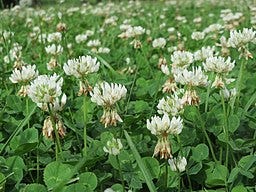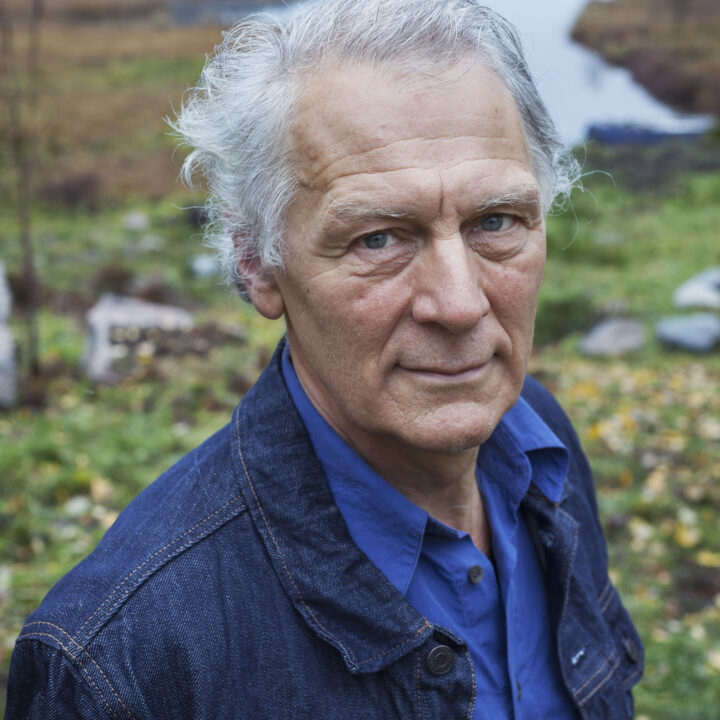In my previous article I asked why we grow food and discussed three different situations: 1) the transition from foraging to farming 2) the first agricultural revolution (with the example of Sweden in the 19th century) and 3) the situation today. In none of the situation has the need to feed people been the driving force. If anything, population growth has been more of a result of increased production than the other way round. But as I concluded in the article, it would be far too simplistic to explain all this with that the number of humans are a determined by the availability of food, even if availability of food clearly sets an upper limit. Therefore, we need to look for one or more other explanations, possibly driving both population and food production at the same time.
Even if it is very interesting and fascinating to discuss, I will skip over the thousands of years preceding what is called the agricultural revolution. This revolution was, despite its name not a very rapid process. Even if England often is seen as the birthplace of the revolution it started on the other side of the Channel, in Flanders in as early as in the 17th century. It spread to parts of Germany and to England, and considerably later to France and Scandinavia and further afield (if you are into the topic, I can recommend The Agrarian History of Western Europe, A.D. 500-1850 by B. H. Slicher van Bath). As my previous article discussed, it was first in the middle of the 19th century that the ”revolution” came to my part of Sweden (Uppsala county, just North of the capital Stockholm).
Even if the farming systems were not identical in Western Europe, they shared some main features. Arable land was mainly dedicated to the growing of grains. Land was fallow every second year or more; in some places, the land was actually fallow two years out of three. Fallowness allows the land to regenerate and yield decently in the coming years. Hay was grown on permanent meadows and cattle grazed on permanent pastures. So there was a movement of nutrients from these meadows to the farmed land. In the new system, more grassland was brought under cultivation, more fodder was grown in the fields and more manure was taken care of and re-circulated to the crops. Instead of letting the land rest fallow, it was used for the production of fodder. Through the introduction of crop rotations of leguminous plants – plants that bind nitrogen from the atmosphere – a lot of fodder could be produced. At the same time, productivity in grain production went up both as a result of the crop rotations and the availability of manure. Intensive row-cropping of potatoes, sugar beets and other root crops and cabbages also produced a more food per hectare than grain production.
Many of the ‘new’ methods applied, such as crop rotations and the growing of leguminous plants to improve the soil (farmers knew that they made the land fertile even if they didn’t know the scientific explanation for it) were actually known, already thousands of years earlier for example by the Ancient Egyptians and Romans. So why were they not practiced all the time?

White clover
The new methods required more labor and employment rose; ‘the average number of hours worked per year by a family of agricultural laborers and small peasants must have increased tremendously in the period from the agricultural revolution to the time when agricultural machinery became widespread,’ says the Danish agronomist Ester Boserup in her seminal work The conditions of agricultural growth. All in all the intensification led to double or more yields. Grain acreage in France remained stable but yields increased 2.1 times in the period 1800–1900. Fodder crops were increasingly grown, and meat production increased by a factor of 3 and milk production more than doubled. All in all, production and consumption doubled and this was all before chemical fertilizers and tractors, which came with the second agriculture revolution.
As was demonstrated by the works of Mats Morell which I related in my previous article, there is really no evidence that this intensification was driven by the need to feed a growing population. This is also clear if one studies statistics from other countries undergoing the transition. In France, the population increased from 27 million to 39 million and food intake rose from some 2000 to 3000 calories in the period 1800-1900.
If one sees where the agricultural revolution started and how it spread, one can see a very strong association with transformation of agriculture from an orientation of self-sufficiency to market orientation. In my book, Global Eating Disorder, I describe this as a process from market contact, to market orientation and finally to market integration. In the market contact phase, farms sell a limited surplus to get income to buy some consumer goods and pay taxes. With market orientation they adjust their production to supply markets, changing the mix of crops and actively seeking market opportunities. They seek to increase production of tradable goods, but still strive to base the production on local resources. With market integration the whole farming process is guided by the market and the farm is integrated in markets for inputs, credit, land and labor. In the case of Flanders and the Netherlands, farmers made cheese and grew flax, madder (a dye plant) and other commercial crops for the market while the region imported grain. Agriculture intensification and development were key elements of the Dutch Golden Age.
In many parts of Europe, even if land was held ‘privately’ by tenants or farmers, the agricultural calendar was governed by a village commune or the court of a manorial lord who owned the soil. There it was decided when to sow and harvest and when land would be open for grazing. Beyond the fields were pastures and woodlands which mostly were commons, used for collective grazing and fuel collection. Animals were often kept in a joint village herd, overseen by a communal herdsman. The number of animals kept was restricted and crops, wood or even manure could not be removed from the village without a permit. All in all, it was a very different society from ours and the influence of markets was weak. In the Swedish town of Gothenburg, records from the middle of the 17th century show that ten times more oxen and steers were slaughtered ‘for family needs’ than ‘for sale’.
The markets that existed were also not particularly free; there were many regulations on prices and over who could trade and where. The English Assize of Bread from the reign of Henry III in the 13th century regulated the price and weight of bread in great detail. These rules were in force, with some changes, until the beginning of the 19th century. Similar rules existed for beer. A Swedish ordinance from 1622 required that a permit to be issued for each animal to be slaughtered and defined the cost of slaughter, quality classifications and the price of the meat, if sold. Meat prices were even seasonally differentiated. The number of meat mongers was regulated and there was a tax on both the slaughtering and the sale of meat.
Population were also strictly monitored and regulated in many different ways in these societies. Not everybody could get married as marriage was linked to social and economic standing. Marriage age was often high. Moral rules regulated sexuality and if a woman still got pregnant, abortions and even infanticides occurred. Various prevention methods existed. And, of course, many more children died in a young age. This all resulted in that population size was rather stable in European societies and that they started to grow rapidly first after the agricultural revolution. During the 19th century, the British population grew almost four times in size, despite emigration to the colonies.
Farmers in the North American colonies, who were not much bound by regulations and traditions as those in Europe, were market oriented from the onset. It is no coincidence that the rate of fertility of these colonizers was very high as labor shortage was a constant problem. American colonists probably had the highest fertility rates in the world, and their family sizes were even larger than in the Third World today.
All in all, the agricultural revolution as well as the population growth were both driven by the process called the Great Transformation by Polanyi or simply “capitalism” by Marx. Marx didn’t describe population growth when he said that: “The bourgeoisie, wherever it has got the upper hand, has put an end to all feudal, patriarchal, idyllic relations” and “The bourgeoisie has torn away from the family its sentimental veil, and has reduced the family relation to a mere money relation.”, but he described how the introduction of capitalism made old customs wither and how children became resources as laborers, instead of being part of the natural regenerative cycles.
With increasing globalization the link between local food availability and population is becoming much weaker. But on a global scale the pattern has still been the same as during the agricultural revolution in Western Europe, i.e. crop production per capita increased with approximately 43% since 1960 despite a population increase of 150%. Clearly this is linked to a continued move away from self-sufficiency to market orientation in agriculture, a process that now is more or less completed.
The narrative of population explosion often has a condescending attitude where high population growth rates are seen as a result of uncontrolled birth rates of poor people and of patriarchal control of women as child bearing machines. But that is a far too simplistic view. Before the transformation of societies into market economies, the richer often had more children than the poor as an expression of wealth and as a means to strengthen the standing of the clan. With capitalism this is no longer needed for the rich while having many children becomes a way for the poor households to get more income. As mechanization, industrialization and automation progress, there is less need for more people and those working need to have better education. This changes the logic of the families and households so that less children are favored. This is the main reason for why birth rates fell in the richer countries while it is still high in countries which have not yet fully industrialized. Notably, there is now a trend in the richer countries that the rich, again, get more children than the poor.
Discussing that goes far beyond the scope of this article, which was to demonstrate how the transformation of societies from traditional societies to market societies was a key driver of the first agricultural revolution and of a rapid growth in population.
Teaser photo credit; White clover. By Forest & Kim Starr, CC BY 3.0, https://commons.wikimedia.org/w/index.php?curid=6158742






